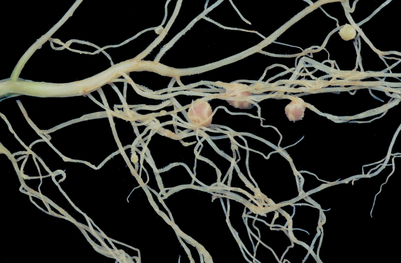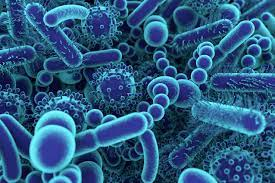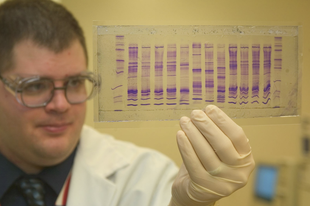|
Written by: El Hebert '24 Edited by: Megan List '24 All over the Earth, root systems like this one (belonging to a black locust) intertwine with helpful fungi. Ninjatacoshell, Wikimedia Commons. In the pitch-black world beneath the soil, a hidden alliance is at work: nearly 80% of all land plants mingle their root systems with fungi, sharing resources. This intimate partnership equips the plants with the tools of survival, and likely even helped them make the first leap from sea to land.
0 Comments
Written by: Casey Chan '23 Edited by: Megan List '24 “What is my next step?”
This question is a constant for students, no matter what level of education they are pursuing. College students in different fields must consider a variety of options, including going to graduate school, medical school, law school, or beginning to work in a professional field. Although the choice is widely dependent on the student’s future goals, there are also certain preconceptions about each career field. Students’ goals and social pressures usually coincide to influence a student’s choice after undergraduate schooling. One of the most prominent considerations for students in science fields are graduate schools. At first, the entire idea of graduate school, and what it entails, may seem somewhat mysterious. Today, Natasha Vargo and Matt Lueckheide, two fourth-year graduate students from Professor Robinson’s inorganic chemistry lab, are here to give us the inside scoop. Maintaining Your Microbes: Promoting Gut Microbiome Diversity and Health in the Modern Era8/22/2021 Written by: Jon Zhang '24 Edited by: Owen Wogmon '23 Microorganisms, or microbes, include bacteria, viruses, fungi, and other organisms. The collection of microorganisms composing an environment is called a microbiome. In the human gut microbiome, trillions of microbes exist inside a pouch called the cecum, right at the connection between the small and large intestines [1].
Written by: Gyles Ward ‘21 Edited by: Casey Chan ‘23 In a world where we must choose between doctor or lawyer, chocolate or vanilla, Netflix or Hulu, must we also choose between male and female? This is the dilema facing intersex individuals today. The term intersex, coined by Richard Goldschmidt in 1917, refers to a person born with genitals or internal reproductive organs that defy classic male or female anatomies [1][2]. Astoundingly, intersex babies make up 1-2 in 100 births in the U.S. alone [3]. Despite its prevalence, intersexuality is treated like a medical anomaly and intersex individuals are shamed into silence, isolation, and conformity [4][5]. If sex is nothing more than a genetic marker, why does it determine our civil liberties?
Written by: Jon Zhang '24 Edited by: Melinda Li '22 If you care about the environment, you’ve likely heard of the Great Pacific Garbage Patch (GPGP), a collection of trash more than twice the size of Texas floating in the Pacific Ocean. Carried by winds and ocean currents, plastic debris accumulates at the surface of the ocean, and the GPGP grows larger each day [1].
The GPGP spans over 600,000 square miles and consists of roughly 1.8 trillion pieces of plastic weighing over 88,000 U.S. tons [1]. While these numbers already seem staggering enough, this only accounts for about 1% of all plastic that has ever entered the ocean [2]. It is mind-boggling enough to visualize a gigantic mass of plastic floating in the ocean, but this is only a small contributor to the sheer extent of marine pollution. Written by: Gyles Ward '21 Edited by: Alyscia Batista '23 As teenage boys anxiously await the next Yeezy drop, many Americans are longing for the day when herd immunity becomes a realization. Currently, three vaccines have been approved by the FDA for emergency use, Pfizer, Moderna, and Johnson & Johnson [1]. Despite aggressive distribution approaches, Black Americans trail dangerously behind in vaccination rates [2]. The Pew Research Center reported in December that only 42% of Black Americans would take the Covid-19 vaccine upon distribution, compared to 63% of white Americans [3]. A well-charted history of denied healthcare and unethical experimentation has forged a contentious dynamic between Black Americans and the medical industry. To put it simply, many Black Americans don’t trust this vaccine. However, it wasn't always this way.
Written by: Yonatan Najman-Licht '24 Edited by: Jason Johnston '23 It takes about 45 hours to drive across America, 51 hours to fly around the globe, and 3 days to reach the moon by rocket ship. When you look into the sky on a clear night, you might be able to see the greenish purple mist of stars that we call the Milky Way. It resembles a thin disk highlighted with a glow of captivating brightness. You might ask yourself: how long would it take me to travel across that massive cloud of stars?
Written by Sarah Wornow ‘23 Edited by Geat Ramush ‘23 Researchers have been building a molecular biology manipulation toolbox for decades. From genome editing to epigenetic control, scientists have the ability to modify intracellular processes. Proteomic editing, or the editing of protein function and regulation, is one tool we don’t yet have at our disposal. However, new technology that takes advantage of proteases has recently been developed that opens the door to proteomic editing.
Written by: Alexander Pralea '24 Edited by: Angelina Cho '24 When a patient sees a medical provider, the ideal clinician strives to provide kind, compassionate care that looks beyond genetics to match the patient’s values and cultural beliefs as best as possible–so-called “personalized medicine” [1]. As medicine adopts the best features of personalized medicine–being attuned to individual preferences–it is also challenged to take advantage of data science and computational biology. This approach, called precision medicine, promises to revolutionize health delivery systems by integrating the best approaches from preventive medicine and reactive medicine, the former of which refers to actively anticipating disease and the latter of which refers to solving disease [2]. Still, logistical barriers consistently impinge on its implementation in clinical settings, raising concerns that scientists’ and clinicians’ gung-ho attitude toward it has been premature.
Written by: Josephine Chen '24 Edited by: Saradha Miriyala '23 In the midst of the pandemic with limited contact with friends and family, people are bound to be bored. Boredom pushes people to ignore risks and consequences and lose their self-control. However, this can be especially dangerous, as boredom causes people to ignore social distancing guidelines to the extent that recent studies have linked boredom to higher infection rates of COVID-19.
|






